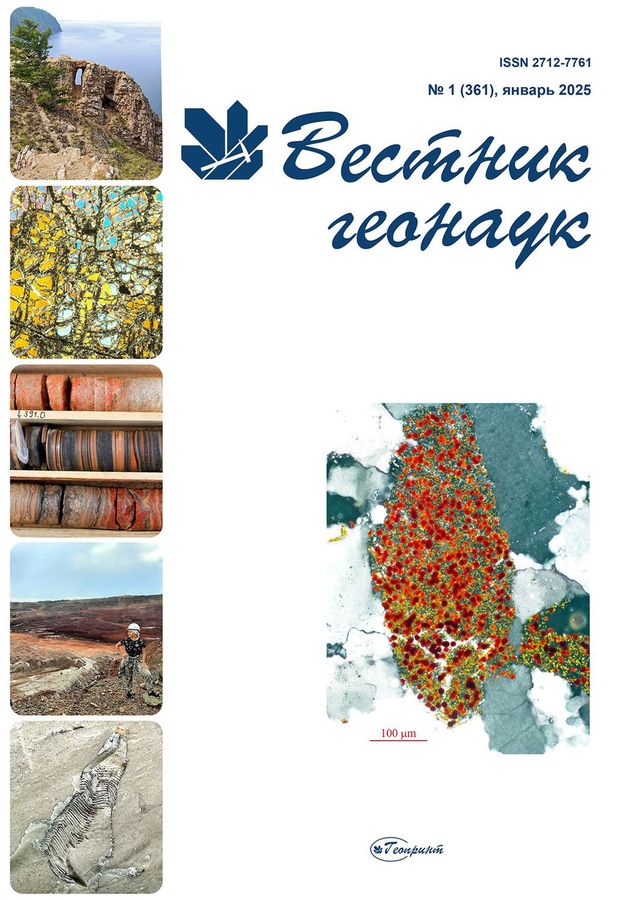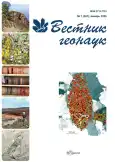Vestnik of geosciences
The journal is a scientific edition founded by Academician N. P. Yushkin in 1995 (previously "Vestnik of the Institute of geology of the Komi Scientific Center of the Ural Branch of the Russian Academy of Sciences").
ISSN (print): 2712-7761
Media registration certificate: ПИ № ФС 77 - 75435 от 19.04.2019
The main tasks of the Journal
- reflecting the latest achievements of the Earth sciences and interdisciplinary areas;
- achieving a new quality level of the Journal, meeting the requirements of HAC standards, international standards and selection criteria for citation indices and inclusion in the information resources of Scopus, Web of Science;
- providing a platform for discussions, exchange of views on topical issues in the field of Earth sciences and related fields of knowledge.
Founder
- Komi Science Centre of the Ural Branch of the Russian Academy of Sciences
Editor-in-Chief
- Askhabov A.M., academician RAS, Doctor of Sc.
Frequency / Access
- 12 issues per year / Open
Included in
- Higher Attestation Commission List, RISC
Ағымдағы шығарылым
№ 1 (2025)
Scientific articles
 3
3


Gold typomorphism in metasomatites of gold-sulfide deposit (Middle Urals, Trans-Ural megazone)
Аннотация
Typomorphic features of gold of gold-sulfide deposit (Middle Urals) are revealed. Mineral compositions were determined using micro-X-ray spectral analysis. The studied coarse free particles occurs in the form of silver gold (up to 7.01 wt. % Ag). When studying gold inclusions in sulfides, 2 varieties by chemical composition of gold inclusions were noted: mercury gold (up to 2.87 wt. % Hg) and silver gold (up to 6.28 wt. % Ag). A rare find of gold telluride, calaverite, was noted as an inclusion in pyrite, the average chemical composition of which (wt. %) is: Au = 45.20 ± 1.33, Te = 54.18 ± 1.38. The forms of gold, its companion elements and carrier minerals have been determined. The technology of mineralogical research with the use of electric pulse disaggregation allowed to avoid overgrinding of the studied samples and to identify mineral, micromineral forms of gold and its satellites by means of hydroseparation method.
 4-13
4-13


Petrophysical grouping of schist rocks of the Nerkayu complex (the Nether-Polar Urals)
Аннотация
The article presents results of petrophysical grouping of schist rocks of the Nerkay complex using petrophysical, petrographic and mineralogical data. Among crystalline schists, four petrogroups differing by material composition, physical parameters and genesis are identified for the first time. Two petrogroups are distinguished by density. The first petrogroup with low densities is represented by highly foliated garnet-bearing and garnet quartz-clinozoisite-amphibole-chlorite-muscovite-albite schists formed over clayey rocks. The second petrogroup of rocks with increased densities consists of gneissose rocks, the protolith of which was sandstones, as well as apobasaltic predominantly amphibole schists.
According to their magnetic properties, four petromagnetic groups are distinguished: two non-magnetic, depending on the rock-forming minerals, and two magnetic, determined by the amount of magnetite formed during secondary (superimposed) processes.
 14-24
14-24


Review of underwater smokers on the Mid-Atlantic Ridge
Аннотация
Video observations and sampling of the Atlantic Ocean floor on the Mid-Atlantic Ridge have revealed previously unknown green, greenish-white and orange smokers in addition to the well-known black and white ones. Besides, a variety of mineral compositions has been revealed among the white smokers. The connection between smokers and degassing processes and sediments, as well as their hydrothermal-bacterial genesis, has been shown.
 25-33
25-33


Identification of geochemical markers of the halo projection of deep-seated ore bodies based on the results of sampling the snow cover (using the example of the Turuntaevsky polymetallic deposit)
Аннотация
The paper considers the possibility of using the step centrifugation method to detect the halo projection of deep-lying ore bodies using geochemical markers, which are trace elements from three paragenetic groups: sulfophiles, siderophiles and lithophiles. The paper presents results of comparative studies of the distribution of trace elements in centrifugates of snow water samples obtained at different rotation speeds. The information content of the new method is assessed as applied to geochemical surveys of snow cover, taking into account the microphysical properties of snow. The epitaxial mechanism of amplification of the signal of trace element concentration in snow grains and the related features of the formation of geochemical anomalies in the snow mass are discussed.
 34-46
34-46


From teaching experience. XVI. Mineral associations: contiguity, paragenesis, parasteresis. Celebrating the 260th anniversary of the birth of V. M. Severgin
Аннотация
The article reviews the history of the concept of paragenesis in mineralogy and petrography. The concepts of «contiguity» by V. M. Severgin and «paragenesis» by A. Breithaupt are compared, contradictions in the discussion of priority are removed. The genetic (causal), paragenetic, parasteric and random (correlated) relationships between mineral associations are studied. The importance of knowledge of the history of science and accordingly reading primary sources is stressed. The article is intended for teachers and students of geological faculties of universities, but can also be used by teachers of secondary schools in optional lessons. The text is accompanied by rare photos from the archive of Professor D. P. Grigoriev placed in the Russian Mineralogical Society.
 47-55
47-55











